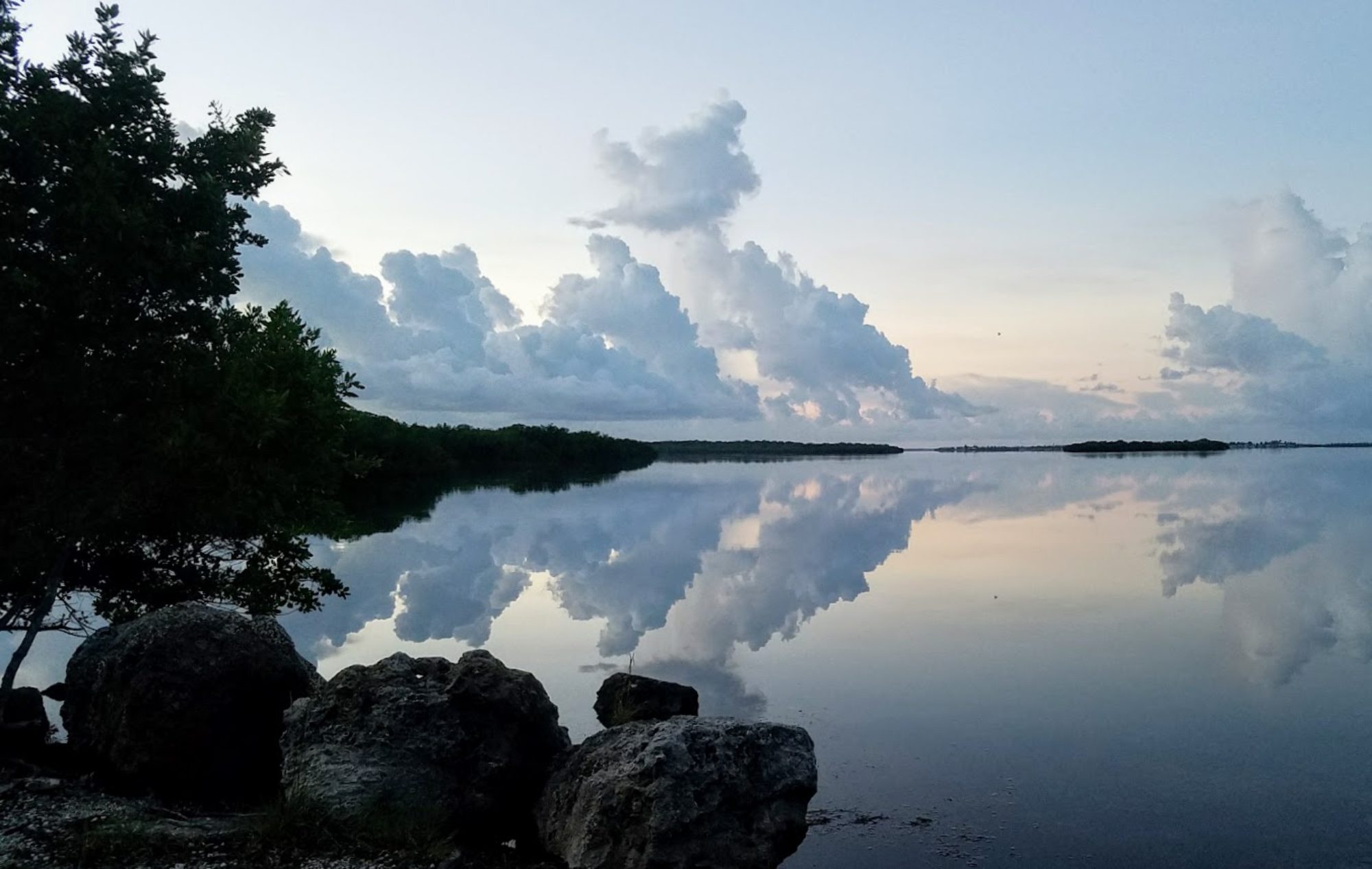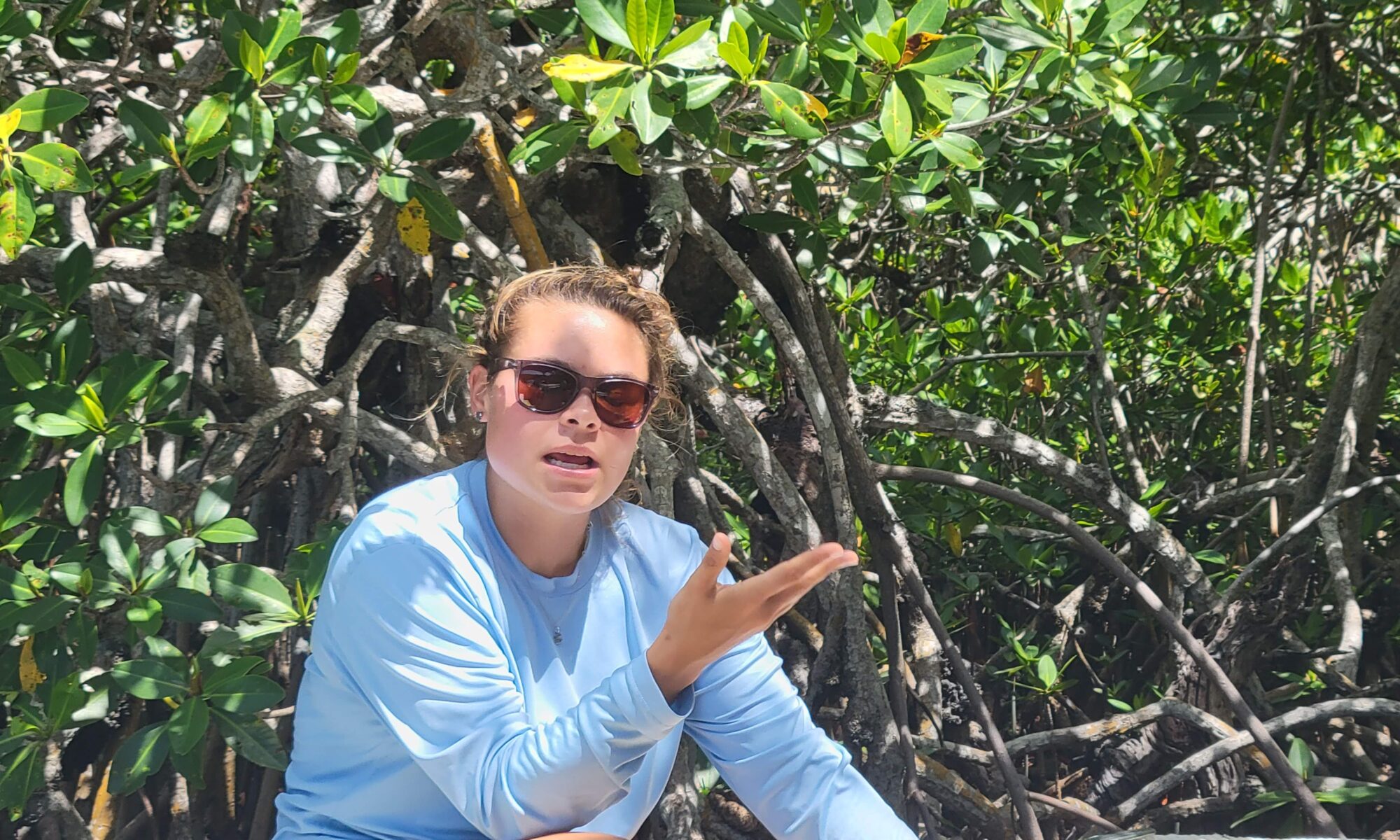After our visit to the seagrass beds off Key Largo, we delved into the ecology of mangroves. A thicket of mangrove always reminds me of a fortress. Red mangroves lining a shoreline or roadside look impenetrable! From the water, the roots look forbidding and mysterious, and from land, the thought of trying to balance on those roots feels like a recipe for broken limbs.
There are three types of mangroves in Florida: Red, Black, and White. Mangroves use a variety of strategies to thrive in what can be a harsh environment — salt water, strong sunlight, storms, and sediment that contains no oxygen. All three varieties can grow in fresh or salt water (technically, they are facultative halophytes, meaning they do not need saltwater to grow). Mangroves have various processes through which they can regulate how the salt from the water is treated.
Mangroves also use an interesting reproduction strategy – they are vivaporous (born live, not a seed or egg), which means that the “seeds” that drop from these trees are not truly seeds – they germinate and grow into seedlings while still attached to the tree. What we think of as seeds are more properly called propagules.
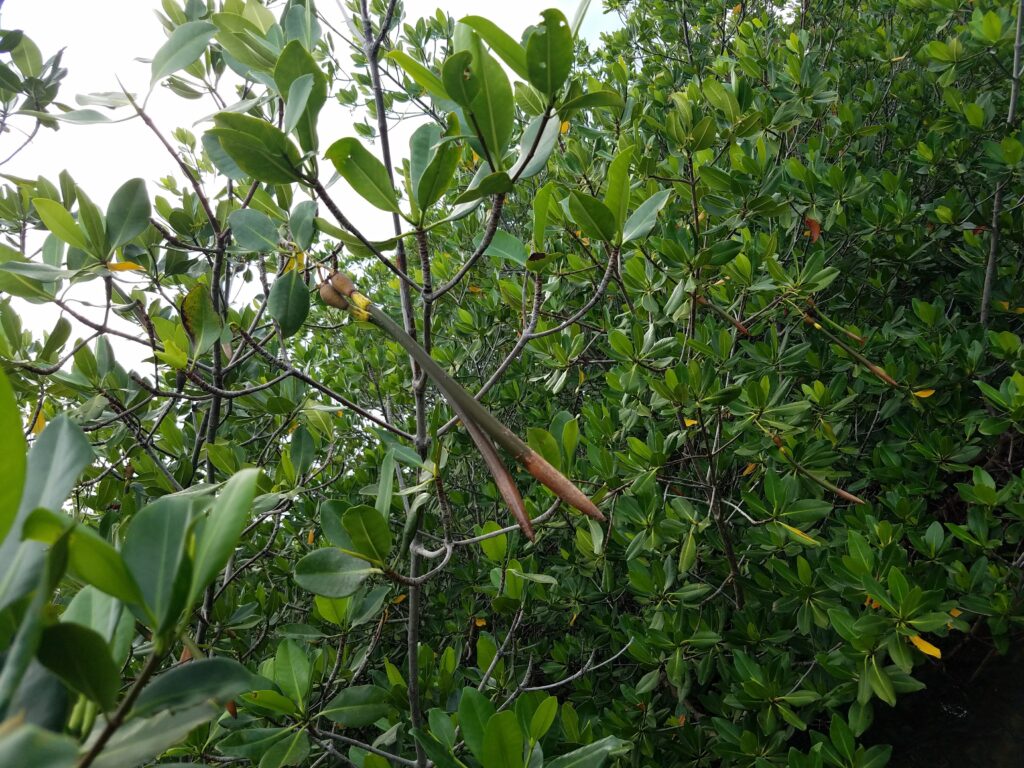
Red Mangroves
Red mangroves (Rhizophora mangle) have both branching prop roots and drooping drop roots. You may hear this plant referred to as the Walking Mangrove because of the appearance that they are walking on the surface of the water. Their roots prevent salt from entering the plant, making red mangrove a salt excluder. Their propagules are able to float on the surface for a year before sinking and taking root.
You’ll find red mangroves on the outermost fringe of land, in water, or even in water with no visible land. Because of the root structure, red mangroves will catch sediment and create small islands. The wider the fringe of red mangroves, the more protection those roots can provide, stopping the wake from passing boats and mitigating storms. Fish can hide among the roots and feed on the algae growing there.
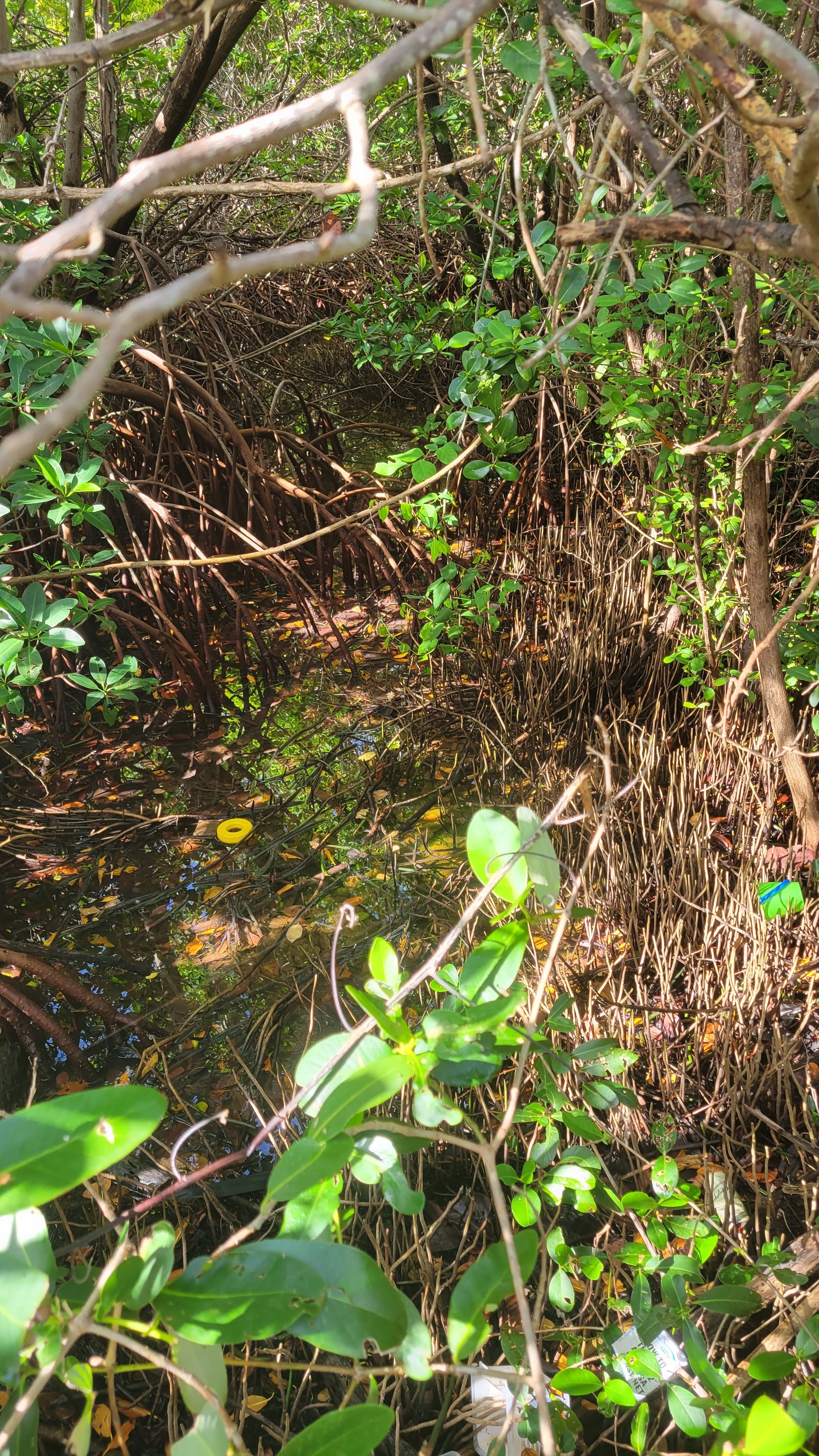
Black Mangroves
Black mangroves (Avicennia germinans) are generally found behind the red mangroves where there may be dry soil, or slightly less wet soil. It has horizontal roots and structures called pneumatophores, which project up from the ground or water as tides change. Pneumatophores are not as robust as prop roots, extending only several inches high. Black mangrove leaves have glands to eliminate salt, making them salt excreters. They excrete enough salt that you can taste it on the leaves! In fact, these plants are capable of eliminating over 90% of the salt that enters their systems.
White Mangroves
White mangroves (Laguncularia racemosa) are the most upland of the three common Florida mangroves and grow on earth, not water. It can survive flooding. Like the black mangroves, white mangroves are salt excreters. At the base of each leaf where the stem begins, two small glands produce sugar. These glands are nectaries, and provide food for ants, which repel other insects which would try to eat the mangrove.
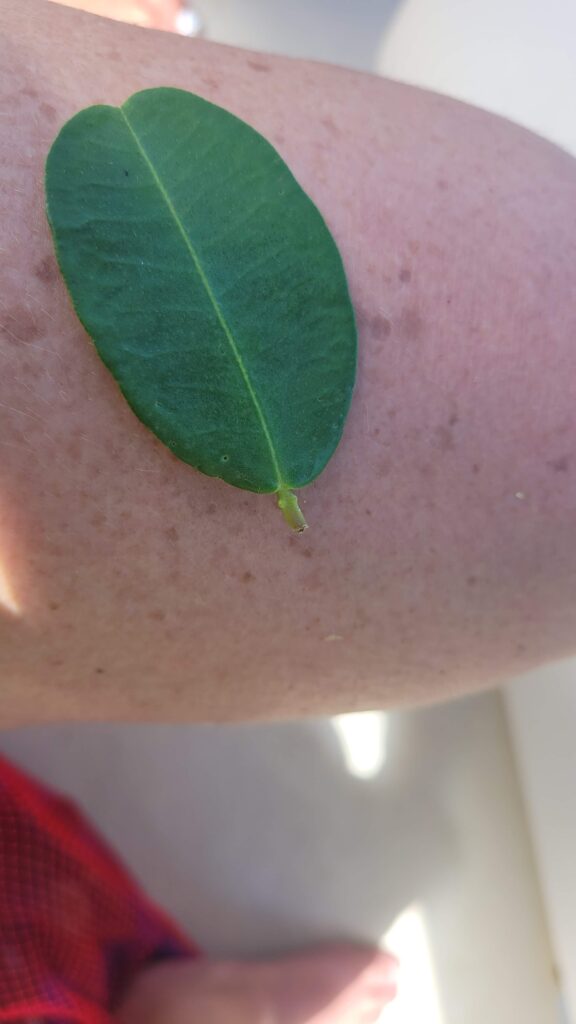
Mangroves provide habitat for fish, crustaceans, snails, jellyfish, tunicates, and other animals. These creatures both hide and feed in the mangroves. Even young corals can grow among mangrove roots, and mangrove islands often serve as rookeries for birds. Acting as huge carbon sinks, mangroves store signigicantly more carbon than land-based forests. Their roots prevent erosion and stabilize shorelines as well as filter pollutants from the water.
While the range of mangrove habitat is increasing to the north, south Florida mangroves are threatened by unsustainable coastal development, water management issues upstream of the Everglades, and irresponsible dredging and filling. Rising sea level caused by climate change is another threat. The damage done to mangrove habitat reaches to the seagrass beds and coral reefs. When environmentalists cry out about the destruction of our coastlines, this is an important part of the story . . . the precious fringe of mangrove swamps surrounding the southern half of our state provides protection reaching far beyond the reach of the mangrove roots.
